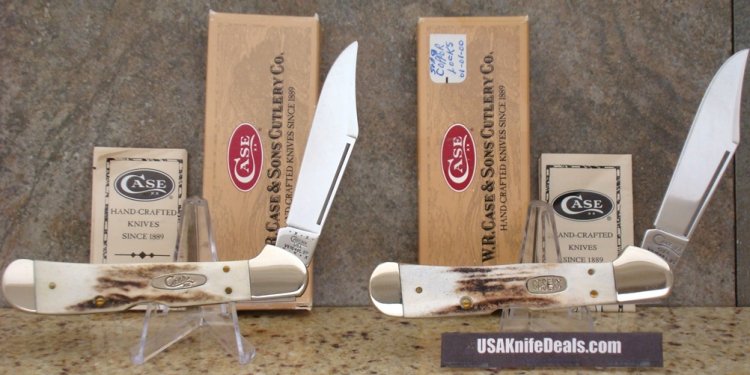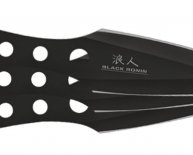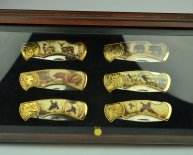
Case Select Knives
As with all things, hunting demands you use the right tool for the right job. Here’s help shopping for your gadgets.
How To Buy Knives And Tools
When you go hunting, you should be prepared to both field-dress your game and to handle a variety of situations such as, cutting tree limbs, emergency repairs to your gear and chores around your campsite. Manufacturers offer a wide choice of knives and tools to help you get the job done without packing your entire toolbox.
Knives
Types/Styles
Hunting knives come in a variety of styles, each designed for specific tasks. Here’s an overview of the types and styles offered and their general purposes.
Bowie knife Designed for heavy-duty all around use It has a blood groove for field-dressing game Its biggest drawback is its heavy weight and long blade Drop-point knife The blade is designed for small game and birds but it’s also a good choice if you bag a trophy and must carefully skin out the head Skinning knife With a wide blade and a fine edge, this is specifically designed for skinning big game It is limited in performing other tasks Boning knife If you want to butcher your own game, this knife is a workhorse provided you keep it sharp Gutting knife Designed to help you clean out game The tip of the blade normally has a second blade with a hook to prevent snagging You can also select a skinning-gutting knife for multiple tasks Multipurpose knives Many knives are designed to give you flexibility in accomplishing several tasks While these designs may not master a specific chore, they are good options if you prefer an all-around workhorseSize
There are two key considerations when choosing the right size knife, the blade length and the handle length The blade of most hunting knives is usually preferred to be no longer than 4 1/2 inches, although you may choose a longer blade for heavy-duty chores, such as gutting and boning. If you are undecided, find a 5-inch blade, which gives you a knife that can perform several jobs. On the handle, you should have a grip that gives you about one-quarter inch of space on each side of your hand. This maximizes your comfort, especially when you use your knife over extended periods.Blades
There are two basic kinds of blades: fixed and folding Fixed knives have the blade and handle all in one piece. If you prefer a fixed blade knife, you should also purchase a sheath for convenient storage and to avoid injury. Many manufacturers sell their knives with a sheath included but you can always buy this separately. Folding knives offer convenience and protection. A folding hunting knife with a 4-inch blade is only 5 inches long when folded so it can be easily stored on your belt or in your pocket.Materials
Blade materials Many blades are made of stainless steel to avoid rust and to provide the temper needed to do the job for which the knife is designed Some manufacturers now use carbon steel because it makes sharpening the blade easier, but these generally require more care To enhance hardness, a titanium nitride is often coated on the steel. This also makes sharpening easier. Handle materials Handles come in different materials Traditional wood handles provide grip and aesthetics Some manufacturers wrap the handle with a tape to give you a better grip Rubberized handles with a texture also afford a better grip, increase comfort and absorb shock Many folding knives are offered with a molded, textured plastic for durability and gripFeatures
For sheath knives, check the tang- how far the blade extends into the handle. Those that extend well into or all the way through the handle are generally stronger. Many manufacturers list a rating on their steel known as the Rockwell C scale, this measures the ideal hardness of a blade. A low C-scale reading may mean the blade is too soft so it will lose its edge quickly. A high C-scale rating may mean the steel is too hard, consequently the blade can’t withstand pressure, impact and torquing. A Rockwell C scale hardness in the mid-to upper 50s is considered best for most blade applications. Serrated blades give you added cutting power, especially useful for cutting rope, cord and other materials. The extra teeth give you this cutting power. You can buy knives that are either partially or fully serrated. The partially serrated knife gives you the choice of two cutting edges in one blade.Tools
You should consider adding a few tools to your gear to help make your hunt more enjoyable and productive. Here are some to consider:
Hatchets
You can carry an ax to help around the campfire but you may want the convenience of a smaller hatchet Hatchets can be used to help clear tree limbs when you set up your treestand, as well as for kindling and firewood, although it will take a little more effort than an ax One-piece styles are better and safer since the steel runs from the head to the bottom of the handle You should get a handle that won’t slip from your perspiration. Rubber and leather laminations work well. If you select wood, though, check to make sure the handle is chemically bonded to the head. Hatchets come in a number of sizes and weights to meet your needs A good all-purpose choice is a hatchet with a 1-pound head and a handle about a foot longAxes
You may need the bulk, heft and efficiency of an ax to fell trees or chop firewood A full-size cabin ax that has a 36-inch handle and a 3 1/2 to 4 1/2-pound head will serve you well The squarish Michigan single-bit is recommended by hunting experts for its efficiency and ease of use Unless you’re experienced with woodcutting, avoid a double-bit ax, which has edges on both sides of the head. These can be dangerous for the occasional woodchopper.Saws
You can pack a foldable saw to help with clearing tree limbs and cutting smaller logs Saws give you the advantage of precision and speed In gereral, a 20- to 24-inch blade will cut through wood that’s 10 to 12 inches thick. If you want a saw to go through larger logs, buy one with a 36-inch bladeMulti-purpose tools
Manufacturers offer a multitude of tools that incorporate a variety of blades, pliers, can openers and more into a compact package Look for one with the minimum number of features you will need. Remember, it is always better to have too many options than too few.Sharpening tools
You should always carry sharpening steel and pocket-sized whetstone to touch up your blade as it dulls during use















